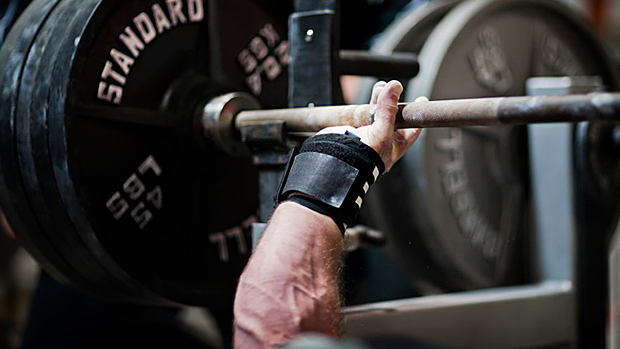If you want to get really strong, eventually you'll need to graduate beyond 5x5 and start finding novel ways to overload your muscles and nervous system to force further adaptations. You'll also need to gain some size, even if strength is your main goal.
Cluster sets and contrast training are two advanced training techniques you can use to kickstart new muscle growth. And by combining them both, even experienced lifters can see massive strength gains in just a few weeks.
Cluster Sets
Normally, training for maximal strength means using heavy weights for low reps. But once past the newbie stage, that means you'll gain strength, but not a lot of size. Cluster sets allow you to lift heavy while working at a higher rep range by incorporating short rests in the middle of the set, sort of like a pre-planned rest-pause.
A lifter focusing primarily on strength, for instance, would lift a weight around 90% of his 1-rep max for two reps, re-rack the weight and rest 15-20 seconds, lift it for another two reps, rest another 15-20 seconds, and finally lift it for one or two final reps. That totals out to 5-6 reps.
A lifter with more of a hypertrophy focus might use 80% of his 1RM, shorten the rests to 10 seconds, and perform three reps within each sub-set.
Contrast Training
With contrast training, the lifter performs a low-speed, high-weight exercise immediately followed by a low-weight explosive exercise that trains the same muscles and movement pattern as the first exercise.
For instance, the bench press might be paired with plyometric push-ups. Or barbell squats might be paired with jump squats. Typically, 4-6 reps are performed with the high-weight exercise, and 8-12 reps with the explosive exercise.
Contrast training works on the principle of post-activation potentiation. The first exercise actually briefly enhances your strength by priming your nervous system, allowing you to exert more force with the explosive exercise.
Putting Them Together
To push ourselves to new heights, what we're going to do is perform supersets as with contrast training, but with a high-weight cluster set used for the first exercise within that superset. It looks like this:
| Exercise | Sets | Reps | Weight | Rest | |
| A1 | Bench Press (20 sec. rest after each double) | 5 | 2-2-1 | 90% 1RM | |
| A2 | Plyo Push-up | 5 | 6-10 | Bodyweight | 3 min. |
For legs, you could do front or back squats plus jump squats, keeping sets, reps, rest, and intensity the same. For back, combine deadlifts with light dumbbell rows.
Programming
These ten sets will thoroughly exhaust you, and you'd be perfectly fine just making them the entirety of your workout. If you want to, you can add some accessory work to focus on smaller muscle groups, but limit it to 2-3 exercises at 2-3 sets each. If you add cardio at the end, limit it to 15 minutes.
Since this is only three days a week and focuses on only three movement patterns, add a fourth workout where you do a few other large compound movements to round out your physique and make sure you're hitting every muscle group.
For this fourth day, forgo cluster sets and contrast training and just train as you normally would. This workout should be relatively easy, as your body's ability to recover is already getting taxed pretty hard by the other three workouts.
Training Split Example
- Monday: Bench press + plyo push-up. Then calves, abs, and 15 minutes jump rope.
- Tuesday: Back squats + jump squat. Then bicep and forearm work, plus 10 minutes cycling.
- Wednesday: Off
- Thursday: Deadlift + bentover dumbbell row. Then shoulders, triceps, and abs.
- Friday: Off
- Saturday: Military press, chin-up, other accessory work as desired, plus 15 minutes of cardio.
- Sunday: Off
This training split can produce rapid strength gains even in experienced lifters. We're talking 50-plus pounds added to your powerlifting total in one month. It's extremely draining however, and most people should only follow it for 4-6 weeks.
For maximum long-term results, follow this training program for 4 weeks, then take a de-load week, then follow a different, less-taxing training program for 4-8 weeks. Repeat as needed until you join the thousand pound club or your training goals change.





